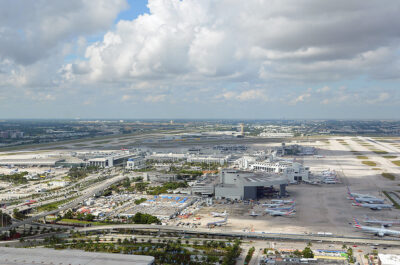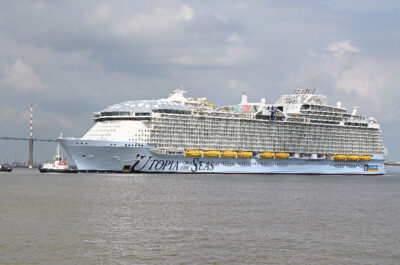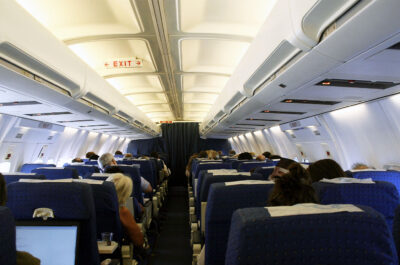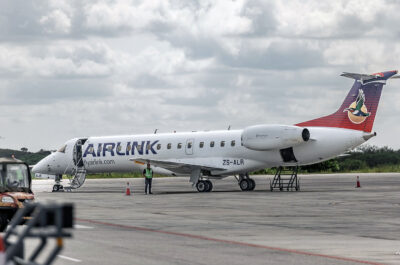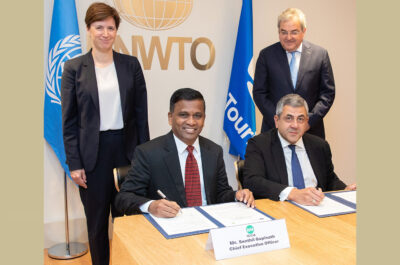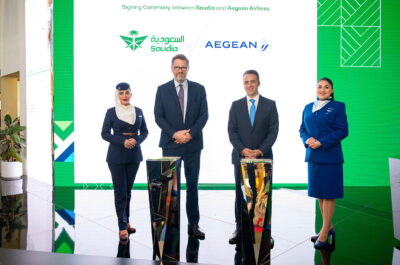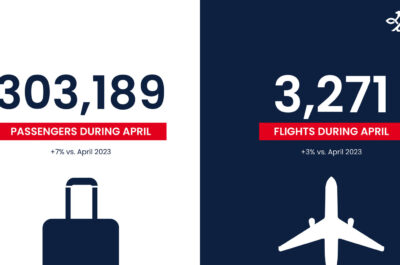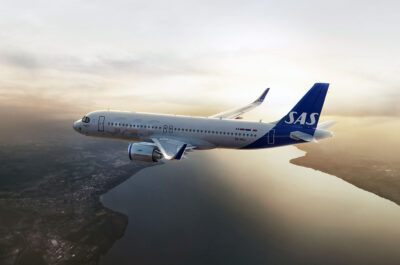U.S. airlines carried 561.9 million scheduled domestic and international passengers on their systems during the first nine months of 2006, 0.3 percent more than they did during the same period in 2005, the…
U.S. airlines carried 561.9 million scheduled domestic and international passengers on their systems during the first nine months of 2006, 0.3 percent more than they did during the same period in 2005, the U.S. Department of Transportation’s Bureau of Transportation Statistics (BTS) reported.
BTS, a part of DOT’s Research and Innovative Technology Administration, reported that the U.S. airlines carried 0.4 percent fewer domestic passengers and 5.6 percent more international passengers during the nine-month period in 2006 than during the same period in 2005.
In September, the most recent month, U.S. airlines carried 56.3 million scheduled domestic and international passengers, 0.8 percent fewer than in September 2005 and the third consecutive month with a year-to-year decline. The number of domestic passengers declined 1.3 percent in September from a year earlier while international passengers increased 2.8 percent.
U.S. carriers operated 7.9 million domestic and international flights during the first nine months of 2006, 3.7 percent fewer than were operated during the same period in 2005. Domestic fights were down 4.2 percent from the previous year while international flights were up 2.8 percent.
In September, U.S. airlines operated 865,500 scheduled domestic and international flights, down 1.6 percent from the number of flights operated in September 2005. The number of domestic flights declined 1.9 percent in September from a year earlier while international flights increased 2.1 percent.
System Comparisons
In other total system comparisons from the first nine months of 2005 to the first nine months of 2006 and from September 2005 to September 2006:
Revenue passenger miles (RPMs), a measure of the number of passengers and the distance flown, were up 2.0 percent in the first nine months. In September, RPMs were up 0.8 percent.
Available seat-miles (ASMs), a measure of airline capacity using the number of seats and the distance flown, were down 0.2 percent in the first nine months. In September, ASMs were up 0.9 percent.
Passenger load factor, passenger miles as a proportion of available seat-miles, was up 1.7 load factor points to 79.8 percent in the first nine months. In September, load factor was down 0.2 load factor points to 74.9 percent.
Flight stage length, the average non-stop distance flown per departure, was up 3.0 percent in the first nine months. In September, flight stage length was up 2.0 percent.
Passenger trip length, the average distance flown per passenger, was up 1.8 percent in the first nine months. In September, passenger trip length was up 1.6 percent.
Among U.S. airlines, American Airlines carried 74.5 million passengers on its system from January to September, the most of any airline. In September, Southwest Airlines carried 7.5 million passengers on its system, the most of any airline and the second consecutive month in which Southwest has topped the list.
Among airports, Atlanta Hartsfield-Jackson International was the busiest U.S. airport from January to September, with 30.5 million domestic and international passenger boardings. In September, Hartsfield-Jackson was the busiest U.S. airport with 3.0 million domestic and international passenger boardings on U. S. carriers.
Domestic Air Travel
U.S. airlines carried 495.9 million scheduled domestic passengers during the first nine months of 2006, down 0.4 percent from the 498.0 million carried during the same period in 2005. The passengers were carried on 7.3 million flights, down 4.2 percent from the 7.6 million flights operated in the first nine months of 2005.
In the most recent month, September, the airlines carried 50.0 million scheduled domestic passengers, down 1.3 percent from the 50.6 million carried during September 2005, the fifth consecutive month with a year-to-year decline. The passengers were carried on 799,800 flights, down 1.9 percent from the 815,000 flights operated in September 2005.
In other domestic comparisons from the first nine months of 2005 to the first nine months of 2006 and from September 2005 to September 2006:
Domestic revenue passenger miles (RPMs), a measure of the number of passengers and the distance flown, were up 0.6 percent in the first nine months. In September, domestic RPMs were down 1.0 percent.
Domestic available seat-miles (ASMs), a measure of airline capacity using the number of seats and the distance flown, were down 2.2 percent in the first nine months. In September, domestic ASMs were down 0.5 percent.
Domestic passenger load factor, passenger miles as a proportion of available seat-miles, was up 2.2 load factor points to 79.8 percent in the first nine months. In September, domestic load factor was down 0.4 load factor points to 73.8 percent.
Domestic flight stage length, the average non-stop distance flown per departure, was up 2.1 percent in the first nine months. In September, domestic flight stage length was up 1.1 percent.
Domestic passenger trip length, the average distance flown per passenger, was up 1.0 percent in the first nine months. In September, domestic passenger trip length was up 0.3 percent.
Southwest Airlines carried 72.2 million domestic passengers from January to September, the most of any airline. In September, Southwest carried 7.5 million domestic passengers, the most of any airline.
Hartsfield-Jackson was the busiest domestic airport from January to September, with 27.8 million domestic passenger boardings. In September, Hartsfield-Jackson was the busiest domestic airport with 2.8 million domestic passenger boardings.
International Air Travel
U.S. airlines carried 66.0 million scheduled international passengers during the first nine months of 2006, up 5.6 percent from the 62.5 million carried during the same period in 2005. The passengers were carried on 648,400 flights, up 2.8 percent from the 631,000 flights operated in the first nine months of 2005.
In the most recent month, September, the airlines carried 6.4 million international passengers, up 2.8 percent from the 6.2 million carried during September 2005. The passengers were carried on 65,700 flights, up 2.1 percent from the 64,300 flights operated in September 2005.
In other international comparisons from the first nine months of 2005 to the first nine months of 2006 and from September 2005 to September 2006:
International revenue passenger miles (RPMs), a measure of the number of passengers and the distance flown, were up 5.8 percent in the first nine months. In September, international RPMs were up 5.1 percent.
International available seat-miles (ASMs), a measure of airline capacity using the number of seats and the distance flown, were up 5.0 percent in the first nine months. In September, international ASMs were up 4.7 percent.
International passenger load factor, passenger miles as a proportion of available seat-miles, was up 0.6 load factor points to 80.1 in the first nine months. In September, international load factor was up 0.2 load factor points to 77.7.
International flight stage length, the average non-stop distance flown per departure, was up 2.6 percent in the first nine months. In September, international flight stage length was up 3.5 percent.
International passenger trip length, the average distance flown per passenger was up 0.2 percent in the first nine months. In September, international passenger trip length was up 2.2 percent.
American Airlines carried 16.4 million international passengers from January to September, the most of any U.S. airline . In September, Americancarried 1.6 million international passengers, the most of any U.S. airline.
Miami International was the busiest U.S. airport for international travel on U.S. carriers from January to September, with 3.4 million international passenger boardings. In September, Miami International was the busiest international airport with 312,600 international passenger boardings.
Theodore is the Co-Founder and Managing Editor of TravelDailyNews Media Network; his responsibilities include business development and planning for TravelDailyNews long-term opportunities.





















































